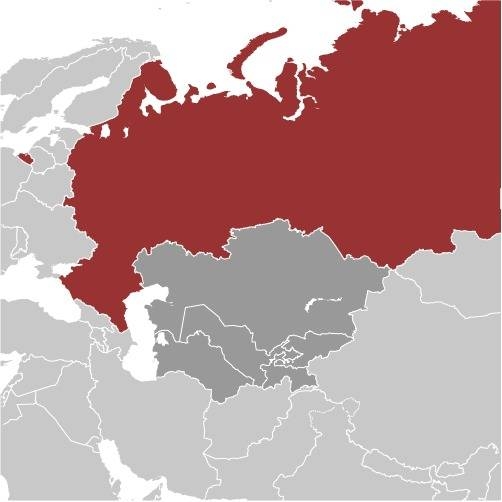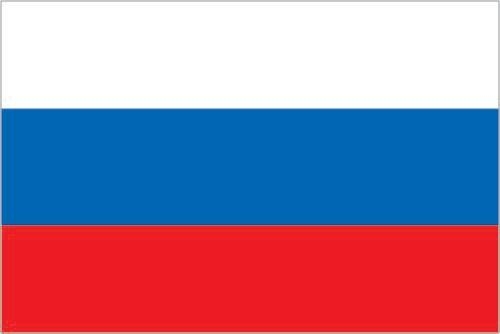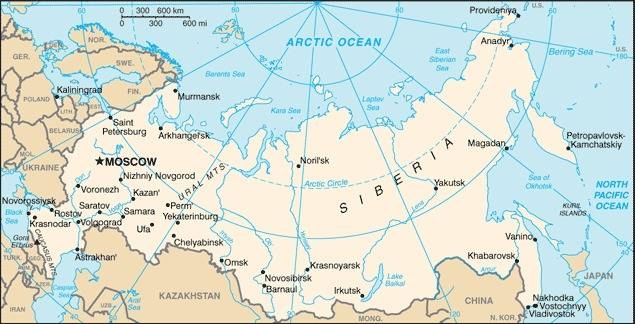Country Summary




Introduction
Background
Founded in the 12th century, the Principality of Muscovy was able to emerge from over 200 years of Mongol domination and to gradually conquer and absorb surrounding principalities. In the early 17th century, Russia continued this policy of expansion across Siberia to the Pacific. Communists under Vladimir LENIN seized power soon after the 1917 revolution and formed the USSR. December 1991 saw dissolution of the USSR into Russia and 14 other independent states.
Geography
Area
total: 17,098,242 sq km
land: 16,377,742 sq km
water: 720,500 sq km
Climate
ranges from steppes in the south through humid continental in much of European Russia; subarctic in Siberia to tundra climate in the polar north; winters vary from cool along Black Sea coast to frigid in Siberia; summers vary from warm in the steppes to cool along Arctic coast
Natural resources
wide natural resource base including major deposits of oil, natural gas, coal, and many strategic minerals, bauxite, reserves of rare earth elements, timber, note, formidable obstacles of climate, terrain, and distance hinder exploitation of natural resources
People and Society
Population
142,021,981 (2022 est.)
Ethnic groups
Russian 77.7%, Tatar 3.7%, Ukrainian 1.4%, Bashkir 1.1%, Chuvash 1%, Chechen 1%, other 10.2%, unspecified 3.9% (2010 est.)
Languages
Russian (official) 85.7%, Tatar 3.2%, Chechen 1%, other 10.1%; note - data represent native language spoken (2010 est.)
Religions
Russian Orthodox 15-20%, Muslim 10-15%, other Christian 2% (2006 est.)
Population growth rate
-0.22% (2022 est.)
Government
Government type
semi-presidential federation
Capital
name: Moscow
Executive branch
chief of state: President Vladimir Vladimirovich PUTIN (since 7 May 2012)
head of government: Premier Mikhail MISHUSTIN (since 16 January 2020); First Deputy Premier Andrey Removich BELOUSOV (since 21 January 2020); Deputy Premiers Yuriy TRUTNEV (since 31 August 2013), Yuriy Ivanovich BORISOV, Tatiana Alekseyevna GOLIKOVA (since 18 May 2018), Dmitriy Yuriyevich GRIGORENKO, Viktoriya Valeriyevna ABRAMCHENKO, Aleksey Logvinovich OVERCHUK, Marat Shakirzyanovich KHUSNULLIN, Dmitriy Nikolayevich CHERNYSHENKO (since 21 January 2020), Aleksandr NOVAK (since 10 November 2020)
Legislative branch
description: bicameral Federal Assembly or Federalnoye Sobraniye consists of:
Federation Council or Sovet Federatsii (170 seats; 2 members in each of the 83 federal administrative units (see note below) - oblasts, krays, republics, autonomous okrugs and oblasts, and federal cities of Moscow and Saint Petersburg - appointed by the top executive and legislative officials; members serve 4-year terms)
State Duma or Gosudarstvennaya Duma (450 seats (see note below); as of February 2014, the electoral system reverted to a mixed electoral system for the 2016 election, in which one-half of the members are directly elected by simple majority vote and one-half directly elected by proportional representation vote; members serve 5-year terms)
Economy
Economic overview
natural resource-rich Eurasian economy; leading energy exporter to Europe and Asia; decreased oil export reliance; endemic corruption, Ukrainian invasion, and lack of green infrastructure limit investment and have led to sanctions
Real GDP (purchasing power parity)
$3,875,690,000,000 (2020 est.)
Real GDP per capita
$26,500 (2020 est.)
Agricultural products
wheat, sugar beet, milk, potatoes, barley, sunflower seed, maize, poultry, oats, soybeans
Industries
complete range of mining and extractive industries producing coal, oil, gas, chemicals, and metals; all forms of machine building from rolling mills to high-performance aircraft and space vehicles; defense industries (including radar, missile production, advanced electronic components), shipbuilding; road and rail transportation equipment; communications equipment; agricultural machinery, tractors, and construction equipment; electric power generating and transmitting equipment; medical and scientific instruments; consumer durables, textiles, foodstuffs, handicrafts
Exports
$379.12 billion (2020 est.)
Exports - partners
China 14%, Netherlands 10%, Belarus 5%, Germany 5% (2019)
Exports - commodities
crude petroleum, refined petroleum, natural gas, coal, wheat, iron (2019)
Imports
$304.68 billion (2020 est.)
Imports - partners
China 20%, Germany 13%, Belarus 6% (2019)
Imports - commodities
cars and vehicle parts, packaged medicines, broadcasting equipment, aircraft, computers (2019)
Exchange rates
Russian rubles (RUB) per US dollar -
Page last updated: Friday, May 13, 2022
